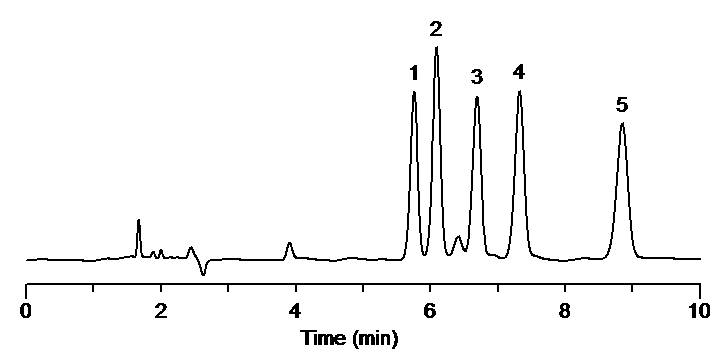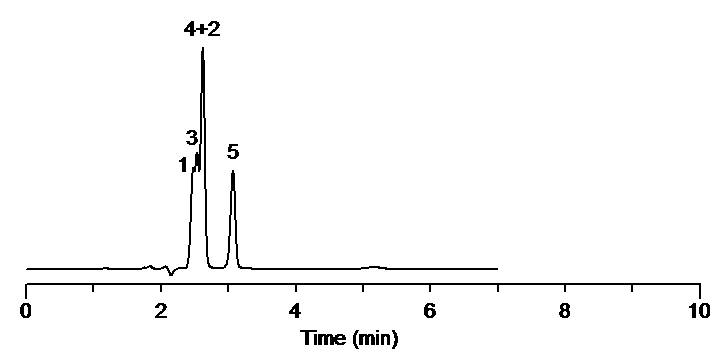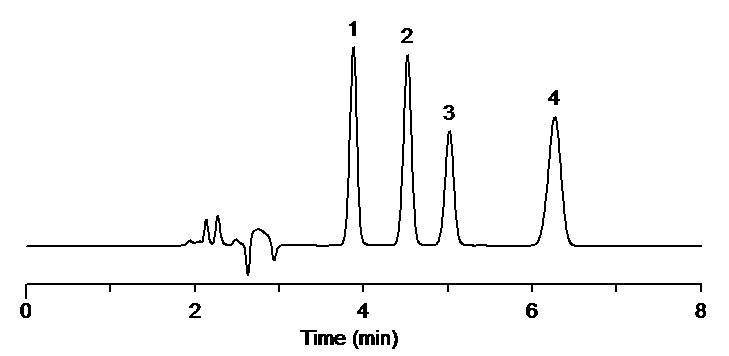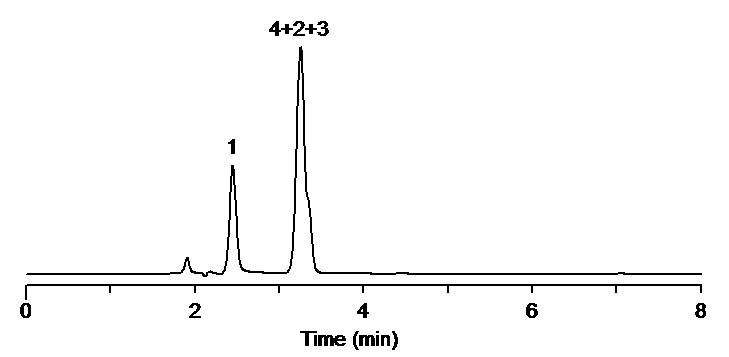- Home
- Products
- HPLC / UHPLC Columns
- Inspire® Columns
- Inspire® HILIC (New)
Inspire® HILIC (New)
HILIC is normal phase chromatography of polar and ionic compounds under RP conditions. It combines the characteristics of three methods in LC – RP, NP, and IC. Inspire HILIC columns retain a water-enriched layer on the surface of the silica. This water layer facilitates the transfer of polar compounds onto the stationary phase for increased retention. Separation is achieved through the partitioning of polar solutes from the high concentration, water-miscible, organic mobile phase into the hydrophilic surface environment. Polar solutes exhibit increased retention, and elute in the order of increasing hydrophilicity. HILIC is ideal for separating and retaining polar compounds that may not retain on traditional RP packings. Unlike reversed-phase columns, Inspire HILIC columns retain highly polar compounds with only small amounts of water in the mobile phase. These more volatile mobile phases increase sensitivity with microbore applications.
Features of Inspire™ HILIC Columns
· Unique selectivity and increased retention for highly polar compounds
· Increased sensitivity and lower detection limits with microbore
· Enhanced retention for hydrophilic/polar compounds
· Increased laboratory throughput and productivity
· Superior batch-to-batch reproducibility
· Suitable for the separation of hydrophilic compounds such as polar acids and bases, polar compounds, nucleosides, oligonucleotides, amino acids, peptides, and water-soluble vitamins
|
Bonded phase |
Particle size(μm) |
Pore size(Å) |
Surface area(m2/g) |
Purity(%) |
Phase density(µmol/m2) |
Carbon loading(%) |
pH range |
Endcapping |
|
HILIC |
3, 5, 10 |
100 |
440 |
>99.999 |
- |
- |
1.5-7.5 |
No |
|
|
||||||||||||||||||||||||||||||||
|
||||||||||||||||||||||||||||||||
|
||||||||||||||||||||||||||||||||
|
• Because HILIC uses a solvent system that is the reverse of what is comment in RP, the peak elution order is reversed on Inspire HILIC • Polar / hydrophilic compounds that are particularly difficult to retain on RP columns will enjoy maximum retention on HILIC |
| β-Blockers | ||||||||||||||||||||
|
||||||||||||||||||||
|
||||||||||||||||||||
| Caffeine metabolites | ||||||||||||||||||
|
||||||||||||||||||
|
||||||||||||||||||
|
||||||||||||||||
|
HPLC Column Care Instructions
|
Phase |
Shipping Solvent |
Storage Solvent |
|
Alkyl RP - ODS, C8, C4, etc. |
MeCN:Water, e.g. 65:35 |
MeCN or MeOH |
|
Aromatic RP - Phenyl, etc. |
MeCN:Water, e.g. 60:40 |
MeCN or MeOH |
|
Normal Phase - CN, Diol, Silica |
n-Hexane:Ethanol, e.g. 98:2 |
n-Hexane:Ethanol or Heptane:IPA |
|
Polar Reverse Phase, CN, Diol |
|
MeCN |
- Dropping or otherwise "shocking" columns can disrupt the column bed and cause peak splitting.
- Use of eluents in the PH range of 1-11 will maximize column life.
- The lower the operating pressure, the longer the operating life.
HPLC packings are subject to a rigorous array of QC tests in a ISO9001 compliant facility, with special emphasis on reagent purity, raw material traceability, and consistency in raw materials and finished products. A detailed analysis of all physical properties, chemical purity, chromatographic selectivity, and column packing efficiency is used to confirm that each lot of column is identical to all previous lots.
We know how important column consistency is to your work, so Dikma Technologies goes to great lengths to make certain that every HPLC column we ship to our customers is of the highest quality possible.
When you receive an HPLC Column from Dikma Technologies, please take the following simple steps:
(1) Check the column for signs of physical damage which may have occurred during shipping. Contact Dikma Technologies immediately to report any problems.
(2) Make sure that the column you received is the column that you ordered.
(3) Take note of the solvent contained in the column during shipping. (The solvent used for shipping is the same as that used as the mobile phase on the QC test chromatogram ). Before attempting to change solvents, make certain that the eluent you will be introducing into the column is completely miscible with the eluent contained in the column, to avoid precipitation of buffer salts or other mobile phase additives.
(4) Test the column to verify column efficiency and back pressure (using one of the later-eluting components of the QC test sample). Contact Dikma Technologies immediately to report any problems.
There are several important things about your analytical method that will greatly affect column life and column performance, including sample preparation, solvent selection, and solvent preparation.
Sample Preparation
Non-ideal chemical and physical interaction of samples with the column frits and column packings is a primary source of problems. Most columns fail because the frit becomes clogged or the stationary phase at the head of the column becomes contaminated.
Samples should be filtered prior to injection. Even sample solutions which appear to be particulate-free can contain small solids which can clog the pores of the column inlet frit. Samples should be filtered through a 0.45µm or 0.2µm syringe filter before injection.
In addition to filtering samples, Guard cartridges can be used to trap "problems" before they reach the analytical column. Guard cartridges are essentially tiny HPLC columns that are cheaper to replace than the analytical column. Please contact Dikma Technologies of Ordering information for guard cartridges.
Solvent Selection
Columns last longest when they are used with benign eluents. Using eluents of high PH or low PH can dissolve silica or catalyze hydrolysis of the bonded phase. Try to stay within the PH range of 1 - 11 on the columns. If you must use a PH outside this range, column life might be reduced.
Solvent Preparation
Use a 0.45 µm or 0.2 µm filter for solvents as well as samples, even HPLC grade solvents!
Column storage
Column storage conditions can have a profound effect on column lifetime and performance-after-storage. Before extended storage (e.g. greater than 2 days), rinse the column COMPLETELY free of eluents containing buffers, ion-pair reagents, or inorganic solutes, by flushing with 20-50 column volumes of the eluent without the dissolved additives. Then flush the column with 5-10 column volumes of water (reverse phase columns only). Then flush the column with 20 volumes of storage solvent (shown above)
In-Situ Column Cleaning
Columns that become fouled over time can sometimes be rejuvenated with an aggressive rinsing sequence, as shown below. In all cases, reverse the column (e.g. attach the outlet end of the column to the pump, and pump the eluent directly into a waste reservoir) and flush the column with 50ml volumes of the indicated solvents in the indicated sequences:
|
Reverse Phase |
|
Normal Phase |
|
(C18, C8, Phenyl, CN (RP*) |
|
(Silica, NH2, CN, Diol) |
|
H2O:MeCN 90:10 (up to 55°C) |
1. |
Hexane/Chloroform |
|
Methanol |
2. |
Methylene Chloride |
|
Acetonitrile |
3. |
Isopropanol |
|
THF |
4. |
Methylene Chloride |
|
Methanol |
5. |
Mobile Phase |
|
Mobile Phase |
|
|
|
*Skip H2O rinse with CN Phase |
|
|
|
Ion Exchange |
|
Protein Removal |
|
(SAX, SCX, DEAE, NH2, CM) |
|
(C18, C4, C8, Phenyl) |
|
Distilled Water (up to 55°C) |
1. |
H2O:MeCN 90:10 |
|
Methanol |
2. |
0.1% TFA |
|
Acetonitrile |
3. |
Isopropanol |
|
Methylene Chloride |
4. |
Acetonitrile |
|
Methanol |
5. |
H2O:MeCN 90:10 |
|
Mobile Phase* |
6. |
Mobile Phase |
* If mobile phase contains a buffer, flush the column with the mobile phase MINUS the buffer first, to avoid precipitation of the buffer in the pure MeOH remaining in the column.
USA
51 Massier Lane
Foothill Ranch, CA 92610, USA
Tel: 1-866-889-9072
Fax: 1-866-833-2653
Email: sale@dikmatech.com
Business hours: 9 AM - 5 PM PST
Canada
255 Shields Court, Unit A
Markham, ON L3R 8V2, Canada
Tel: 905-944-8066
Fax: 905-944-0181
Toll-Free:1-866-889-9072
Email: sales@dimaglass.com
Business hours: 9 AM - 5 PM EST
Asia / Pacific Area
Room 9, 5F., No.763 Wenlin Road,
Shilin District, Taipei City
111, Taiwan
Email: paulw@dikmatech.com

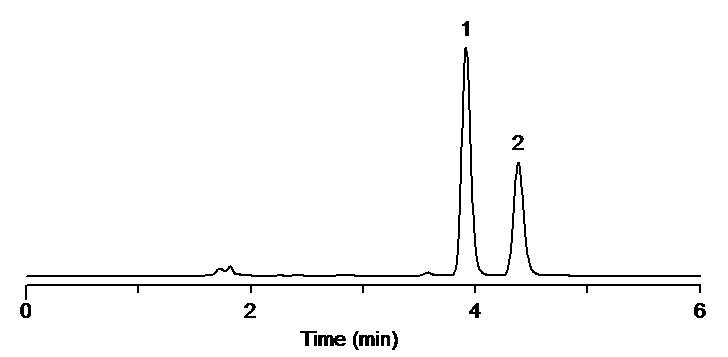
.jpg)
